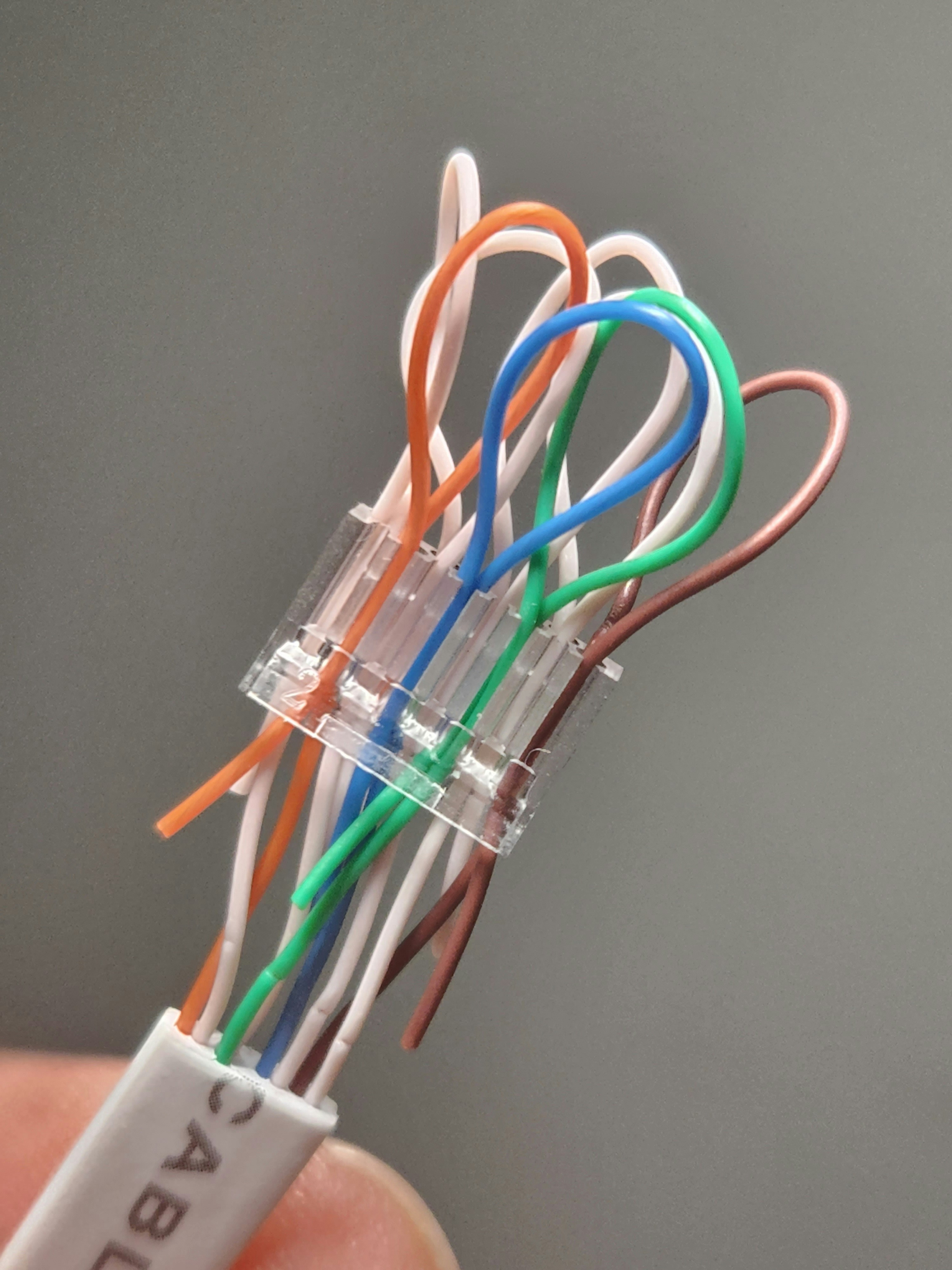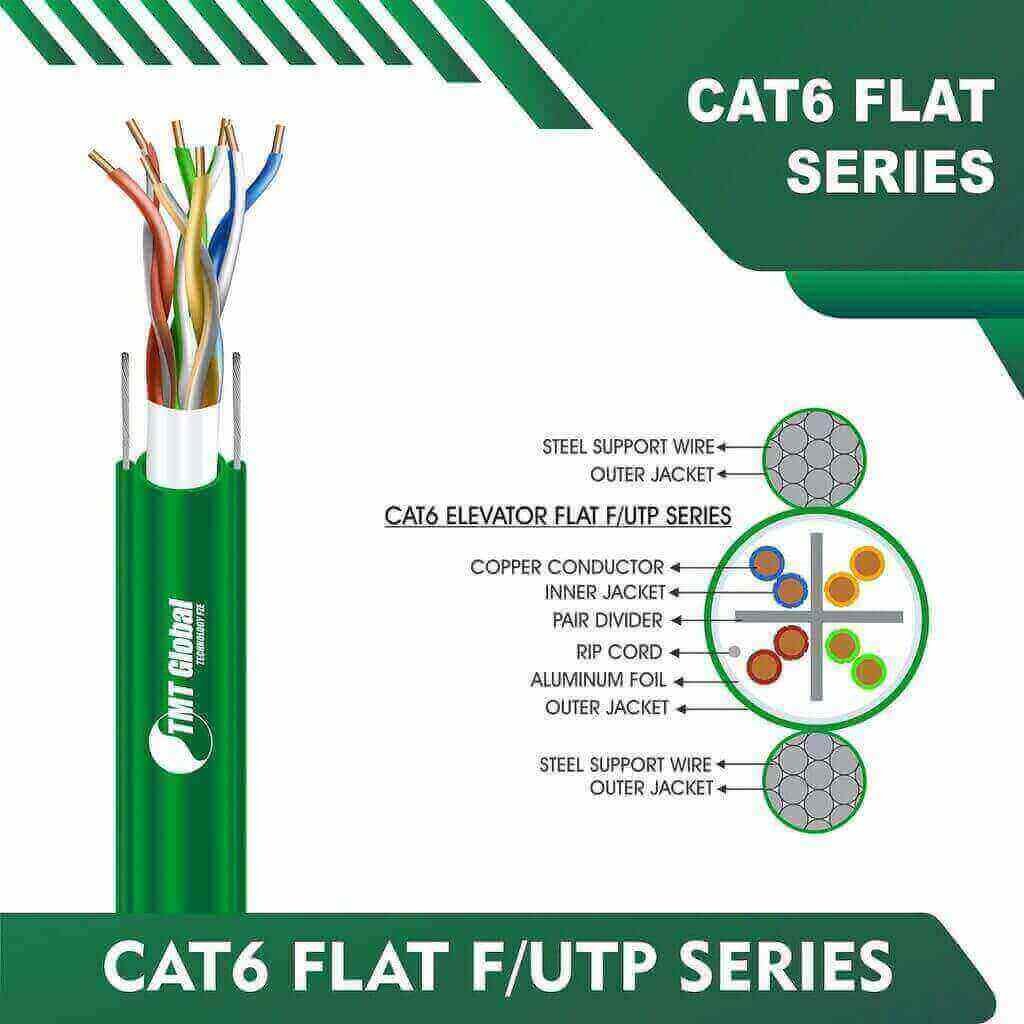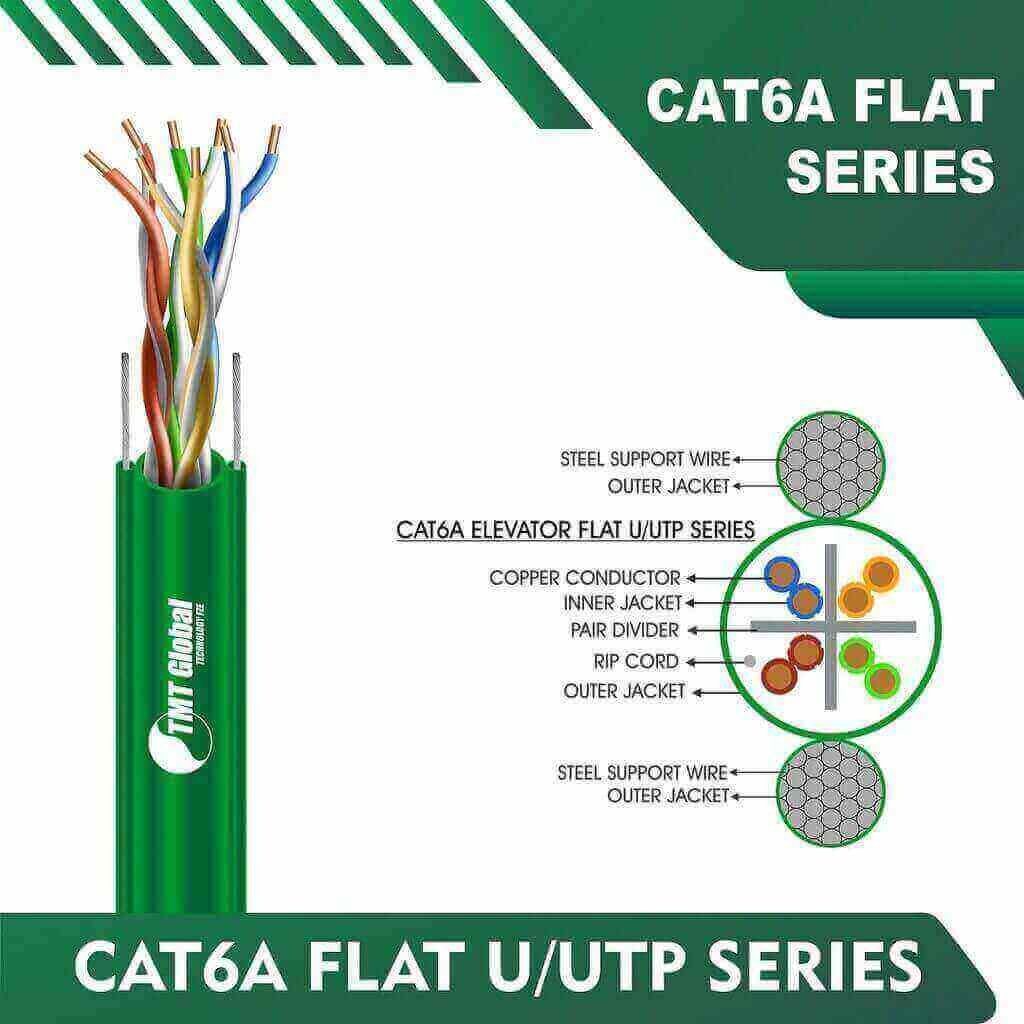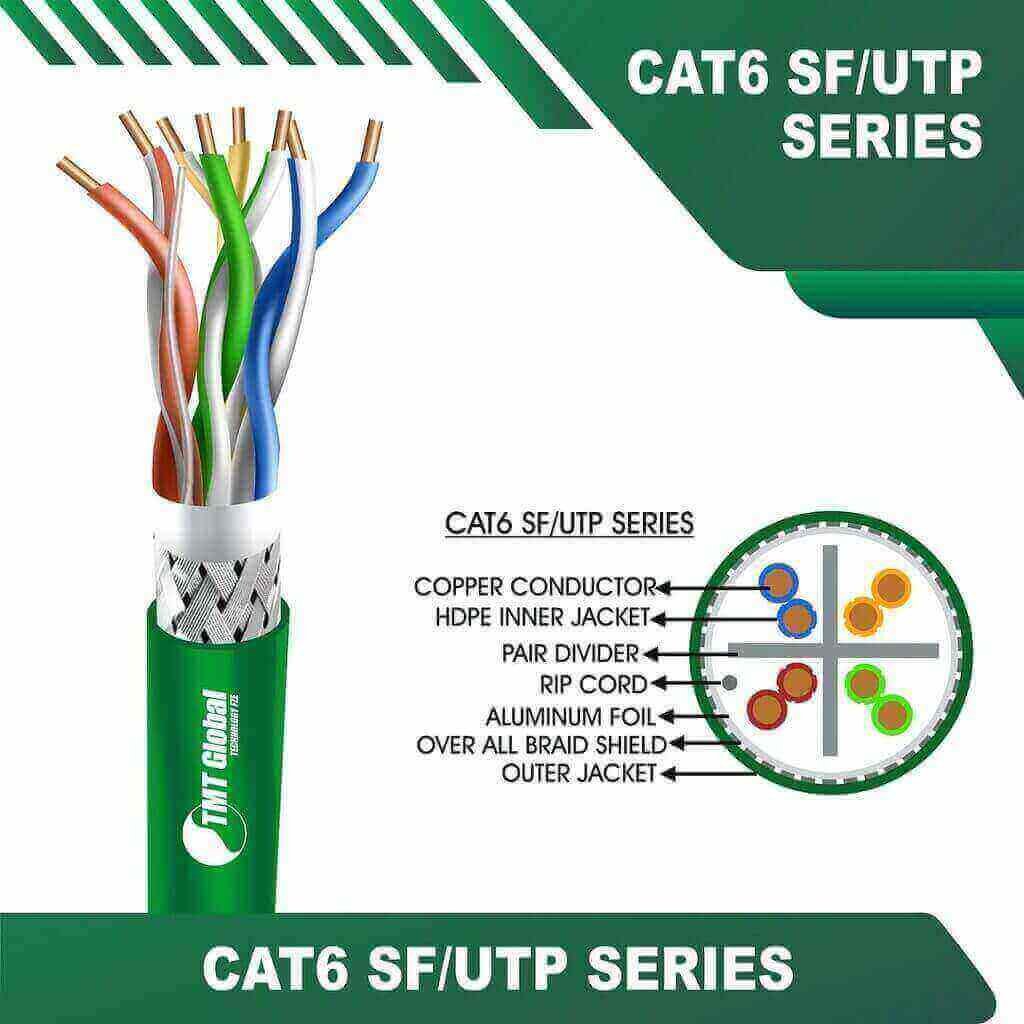Understanding Color Codes in Network Cables: TMT Global Technology Ltd’s Innovations for the Saudi Arabian Market

Introduction to Network Cables
Network cables are essential components in modern communication systems, serving as the backbone for connectivity among various devices in both residential and commercial settings. They allow for data transmission between computers, switches, routers, and other networking equipment, ensuring seamless communication across networks. The significance of these cables cannot be overstated, as they facilitate essential functions such as internet access, file sharing, and multimedia streaming, thus enabling efficient and effective information exchange.Color Codes in Network Cables
There are various types of network cables available, each designed for specific applications and performance requirements. The most common types include twisted pair cables, coaxial cables, and fiber optic cables. Twisted pair cables, often categorized into unshielded twisted pair (UTP) and shielded twisted pair (STP), are widely used in local area networks (LANs) due to their cost-effectiveness and capability to support high-speed data transfer.





Coaxial cables, which feature a single copper conductor surrounded by insulation and protective layers, are typically used for cable television and broadband internet connections. Fiber optic cables, on the other hand, use light to transmit data over long distances, providing high bandwidth and excellent speed, although they tend to be more expensive and delicate compared to their copper counterparts.
An integral part of network cables is their color coding system, which plays a crucial role in ensuring proper connectivity and organization. Color codes help technicians and network administrators effortlessly identify and manage cable connections, reducing errors, and enhancing efficiency during installation and maintenance. By adhering to standardized color coding practices, professionals can simplify the process of troubleshooting and upgrading network infrastructure, minimizing downtime and improving overall network performance. As networking technologies evolve, understanding these codes and their significance in infrastructure design will remain essential for optimizing performance and ensuring seamless connectivity.
The Importance of Color Coding in Network Cables
Color coding in network cables plays a crucial role in the organization, maintenance, and overall functionality of networking systems. Each color in a cable’s wiring serves specific purposes that significantly enhance the identification of wire pairs. By utilizing standardized color codes, technicians and installers can easily distinguish between different pairs of wires, which is essential during both installation and repairs. This is particularly important in complex environments where numerous cables are interconnected, as proper identification leads to reduced installation time and minimizes potential errors.
Moreover, color coding facilitates efficient troubleshooting in networking environments. When issues arise, technicians can quickly reference color codes to pinpoint the source of a problem. Without a standardized color coding scheme, diagnosing faults could become cumbersome and time-consuming, potentially leading to prolonged downtimes in critical data networks. Clear visual cues provided by color-coded wires enable rapid assessments, allowing for quicker resolutions and maintaining the network’s integrity.
Consistency across installations is another vital aspect of color coding in network cables. Adhering to established color schemes ensures that all installations are uniform, regardless of the technician or team responsible for the job. This uniformity is not only essential for current installations but also serves long-term benefits in maintenance and upgrades. Future technicians benefit from the clear visual guidelines presented by the color codes, ensuring they can seamlessly integrate new components into existing infrastructures without confusion.
In addition, standard color coding enhances safety in networking environments. By clearly identifying wire pairs and functions, technicians can work more confidently, thereby reducing the likelihood of mistakes that could result in equipment damage or safety hazards. Overall, implementing a sound color coding system within network cables is fundamental for efficiency, safety, and optimal performance in any networking situation.
TMT Global Technology Ltd: A Leader in Networking Solutions
TMT Global Technology Ltd has established itself as a prominent player in the realm of networking solutions, particularly within the Saudi Arabian market. Founded with the vision to innovate and excel in the telecommunications sector, TMT has made substantial strides since its inception. The company has consistently prioritized the enhancement of communication infrastructures, understanding the critical role that reliable networking solutions play in the modern digital landscape.
With a focus on manufacturing high-quality network cables, TMT Global Technology Ltd has developed a diverse product line that meets the varying demands of businesses across Saudi Arabia. The company’s commitment to quality is evident in its rigorous manufacturing processes, ensuring that all products exceed industry standards. TMT has invested significantly in research and development, reinforcing its reputation for innovation and quality in the field of networking solutions. This dedication has enabled TMT to not only adapt to emerging technologies but also to set benchmarks in the industry.
As TMT Global Technology Ltd continues to grow, it remains dedicated to upholding the principles of integrity and customer satisfaction. The company has cultivated strong relationships with local businesses and stakeholders, becoming a trusted provider of networking solutions. A testament to its expertise and reliability, TMT has garnered numerous accolades for its products and services, solidifying its reputation as a leader in the networking sector. In recognizing the unique requirements of the Saudi Arabian market, TMT has tailored its offerings to serve a wide array of customers, from small enterprises to large multinational corporations.
In an ever-evolving technological landscape, TMT Global Technology Ltd stands poised to meet the challenges of the future, driven by a commitment to quality, innovation, and customer service in the networking solutions industry.
Color Code Standards for Network Cables
In the realm of network cabling, understanding the established color code standards is critical for ensuring optimal functionality and organization. The two primary wiring schemes utilized in network cables are T568A and T568B, each adhering to specific color coding rules that define the order of twisted pairs within the cables. This organization enhances signal integrity and reduces the potential for electromagnetic interference.
The T568A wiring scheme is commonly used in various residential and commercial installations. In this scheme, the wiring order is as follows: White/Green, Green, White/Orange, Blue, White/Blue, Orange, White/Brown, and Brown. Each color serves a distinct purpose, allowing for a straightforward identification of network connections. For instance, the white/green and green wires are employed for data transmission, while the blue wires often denote the twisted pair used for telephone connections.
Conversely, the T568B wiring scheme is often favored in many corporate settings. The color order in this scheme is slightly different: White/Orange, Orange, White/Green, Blue, White/Blue, Green, White/Brown, and Brown. It is crucial to note that T568B maintains the same pairing functionality as T568A but is arranged differently. Consequently, both wiring standards achieve equivalent data transmission capabilities, enabling users to select the most suitable option based on their existing infrastructure.
Understanding these color code standards is essential for technicians and network specialists. Proper adherence to T568A and T568B standards not only ensures that installations are compliant but also helps facilitate seamless troubleshooting and future upgrades. By following these standards diligently, professionals can provide reliable network connections that meet the demands of modern telecommunications.
TMT Global’s Color Coding Innovations
TMT Global Technology Ltd has made significant strides in enhancing color coding solutions for network cables, specifically designed to address the unique requirements of the Saudi Arabian market. Recognizing the importance of effective color coding for improved usability and reliability in network installations, TMT Global has introduced several innovative features that stand out in the industry.
One of the key innovations is the implementation of high-visibility hues that facilitate easier identification during installations. By utilizing a broader spectrum of colors, TMT Global ensures that the risks of connecting cables incorrectly are minimized. This improvement plays a crucial role, especially in complex wiring environments, where maintaining organization is paramount. Additionally, TMT Global has employed advanced materials that not only maintain vibrant colors but also enhance the durability of the cables. This is particularly important in Saudi Arabia’s harsh climatic conditions, where temperature fluctuations and sand exposure can pose challenges to traditional materials.
Moreover, TMT Global’s color coding also embraces a modular approach, allowing for customized solutions that can adapt to various installation needs. The modular components are color-coded to simplify the installation process and improve troubleshooting by enabling technicians to quickly identify and rectify issues. This enhancement serves to significantly increase the efficiency of network maintenance and management in both residential and commercial environments.
Furthermore, TMT Global Technology Ltd has invested in rigorous testing protocols for their cable products. These protocols ensure that the effectiveness of the color-coded systems does not compromise the overall performance and reliability of the network cables. Through these innovations, TMT Global continues to set new standards in color coding, making significant contributions to the Saudi Arabian technology sector and improving connectivity solutions across the region.
Applications of TMT Network Cables in Saudi Arabia
The integration of TMT network cables into the Saudi Arabian market has opened numerous possibilities across various sectors, illustrating the adaptability and functionality of these cables. In the telecommunications sector, TMT network cables play a crucial role in establishing reliable and efficient communication networks. With the growing demand for high-speed internet and innovative services, telecommunications companies have increasingly turned to TMT for solutions that not only enhance connectivity but also support the ongoing digital transformation initiatives in the region.
Furthermore, in the education sector, TMT network cables facilitate effective learning environments through robust internet connectivity. Schools and universities utilize these cables to support online learning platforms and e-resources, ensuring that students have access to the necessary tools for their educational growth. This shift towards technology-enabled learning is critical in a rapidly evolving digital landscape, making TMT’s network cables essential for fostering academic success.
In the healthcare industry, the reliable performance of TMT network cables is paramount. Hospitals and clinics require stable, high-speed networks to manage patient records, telemedicine services, and medical imaging systems. By utilizing TMT’s innovative cabling solutions, healthcare facilities can improve operational efficiency and enhance patient care through seamless communication and data sharing.
Additionally, in enterprise solutions, businesses across various industries benefit from the connectivity offered by TMT network cables. From supporting critical internal networks to enabling cloud computing services, these cables form the backbone of modern enterprise infrastructure. As Saudi Arabia continues to diversify its economy, TMT’s commitment to providing cutting-edge network solutions aligns with the evolving needs of enterprises seeking to remain competitive in a global market.
Installation Best Practices for Network Cables
When it comes to the installation of network cables, adhering to best practices is essential for ensuring optimal performance and reliability. At TMT Global Technology Ltd, we emphasize the importance of proper color coding and organization during the installation process. As network cables facilitate communication in various environments, careful planning and execution significantly reduce the likelihood of connectivity issues.
First and foremost, planning is crucial. Before initiating the installation, it is important to assess the network requirements and design an appropriate layout. This involves determining the types of cables needed, the distance between devices, and the necessary bandwidth. Proper color coding aids in identifying cable functions at a glance, which can streamline troubleshooting and maintenance. Use a clear and consistent color scheme that adheres to industry standards, such as T568A and T568B wiring configurations, to differentiate between data lines and other connections.
Secondly, handling cables with care is imperative during installation. Avoid kinks and sharp bends in the cables, as these can impair signal integrity. Ensure that cables are not stretched or pulled excessively, which can lead to physical damage. Additionally, support cables with appropriate brackets and ties to prevent unnecessary weight on the connections and maintain organization. It is advisable to avoid running network cables alongside power lines to mitigate the risks of electromagnetic interference, which can degrade performance.
Lastly, adherence to international wiring standards, such as those set by the ISO/IEC, ensures compliance and reliability. Proper labeling and documentation during the installation process not only assist current users but also facilitate future modifications or repairs. By following these best practices for network cables, users in Saudi Arabia can leverage the full capabilities of TMT Global Technology Ltd’s innovations, fostering efficient and effective network infrastructure.
Troubleshooting Common Network Cable Issues
Network cables serve as the backbone of modern communication depending on their specific functionalities and forms. Despite their essential nature, users frequently encounter issues that can significantly disrupt connectivity and performance. Recognizing the importance of color codes in network cables can improve the diagnostic process immensely. Understanding these codes allows technicians to quickly identify improperly wired cables and proceed with troubleshooting.
One of the most common issues faced with network cables is physical damage, which can stem from handling, environmental conditions, or installation errors. To troubleshoot, inspect the cable visually for any cuts, bends, or kinks that may interrupt signal transmission. If the cable appears intact, verifying the connectors is crucial as faulty connectors can lead to intermittent connectivity. Testing the cables with a network tester can also provide valuable insights into whether the signals are being transmitted effectively.
Another frequent problem is signal loss, which can result from improper wiring configurations or electromagnetic interference. The color codes utilized in Ethernet cables, such as T568A and T568B, can guide users in checking the correctness of their connections. By following these standards, technicians can ensure that the send and receive pairs are correctly aligned, minimizing the risk of crosstalk and signal degradation.
Furthermore, recognizing issues with network speed is essential. If users experience sluggish performance, examining the cable specifications is recommended. Different types of Ethernet cables, such as Cat5e or Cat6, have varying capabilities in terms of speed and bandwidth. Ensuring that the correct cable type is deployed in accordance with network requirements can dramatically enhance overall connectivity. Tools like speed tests may also help in identifying whether the cable is performing at its optimal level.
In conclusion, effectively troubleshooting network cable issues relies on a comprehensive understanding of both the physical aspects of the cables and the significance of color codes. By emphasizing these factors, users can resolve common connectivity problems and enhance the reliability of their networks.
Conclusion and Future of Network Cabling in Saudi Arabia
Throughout this discussion, we have highlighted the crucial role that color codes in network cables play in ensuring efficient data transmission and management. The adoption of standardized color coding is paramount for maintaining clarity and organization within network infrastructures. TMT Global Technology Ltd has demonstrated significant innovation in this area, contributing to the development of a robust digital framework in Saudi Arabia.
The advancements introduced by TMT Global Technology Ltd not only facilitate better network management but also enhance the overall reliability of connectivity within various sectors, including education, healthcare, and business. As Saudi Arabia continues to invest in its digital economy, the importance of quality network cabling cannot be overstated. Cabling systems form the backbone of any effective information technology strategy, supporting critical functions necessary for both growth and stability.
Looking ahead, the future of network cabling in Saudi Arabia is poised for transformative developments. Emerging technologies such as 5G, Internet of Things (IoT), and smart infrastructure initiatives will necessitate advancements in cabling solutions. Quality cabling will be integral to accommodating the needs of these systems, requiring ongoing investments in modernized infrastructure and training. Additionally, with the growing emphasis on sustainable practices, it is likely that the industry will witness a shift toward eco-friendly materials and construction methods, enhancing network performance while minimizing environmental impact.
Ultimately, as organizations seek to navigate the complexities of an increasingly interconnected world, the role of reputable companies such as TMT Global Technology Ltd in supplying high-quality network cabling solutions will be essential. Their commitment to innovation positions them well to meet the dynamic demands of Saudi Arabia’s burgeoning digital landscape, ensuring that both businesses and consumers benefit from reliable and efficient network connectivity.
